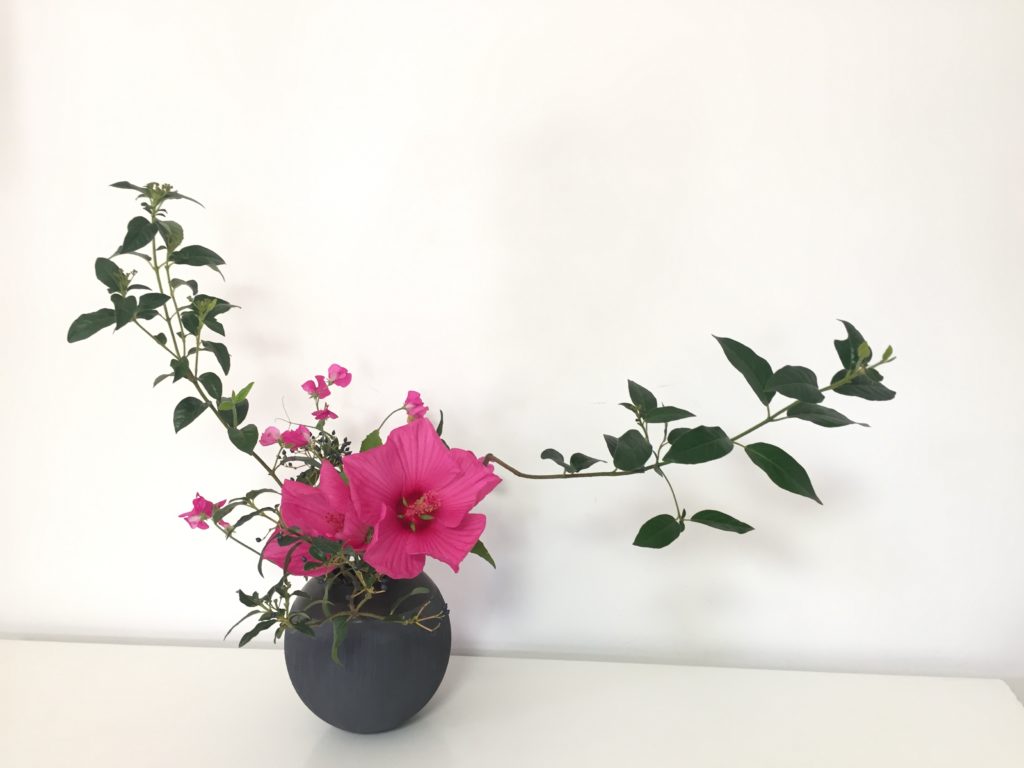
Ikebana, Japan’s traditional flower arrangement art, traces its origins back for hundreds of years, but it stillexists as a vital element in the contemporary world of art. It has emerged from its historical setting within the “Tokonoma” alcove of the Japanese house and entered the modern everyday world.
While a painting is an expression of art drawn on a canvas with a brush, Ikebana is an expression in three dimensions composed of plant materials arranged in a vase.
In basic form, an Ikebana arrangement follows a fixed pattern:
A triangle of three points representing; heaven earth and man, emphasis is placed on linear perfection, color harmony, space and form.
There are more than three thousand Ikebana Schools in Japan today. One of the largest and most spread in the world is Sogetsu School of Ikebana. It has 49 branches in Japan, and about 120 overseas branches and study groups in 35 countries and regions.

